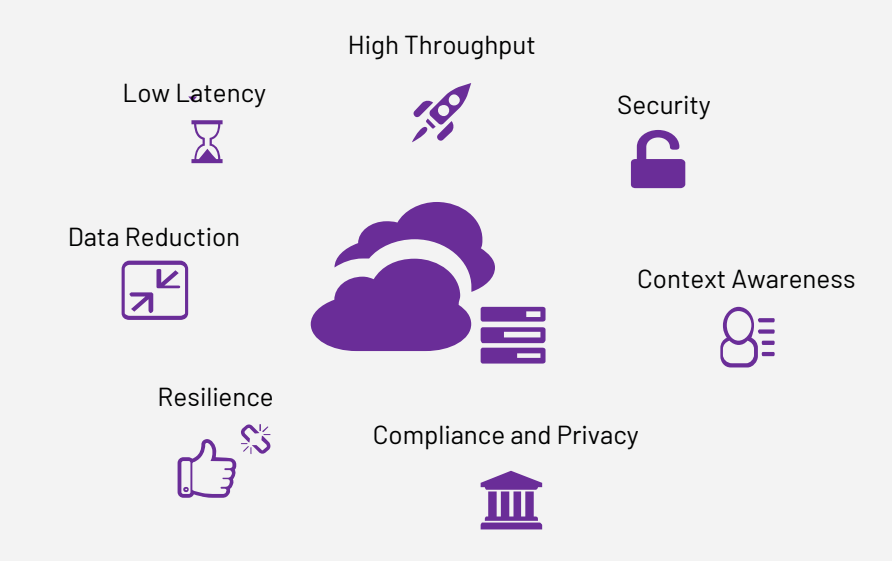Benefits of Edge Computing
While cloud platforms have been remarkably successful over the last decade, these centralized data centers do not necessarily meet all application needs.

This is where edge computing steps in, with the following unique benefits:
• Latency: The edge can provide latency in milliseconds or even less, while multiple hops and long data transmission distances mean that the latency today to the current “edge” of the network, usually in the form of a content distribution network (CDN), is in 50-150 ms range. Of course, latency to centralized data centers and the public cloud could be even greater.
• High throughput: The throughput available to the user from the edge, served via cached or locally generated content, can be orders of magnitude greater than from a core data center or even the CDN.
• Data reduction: By running data analytics at the edge, operators and application vendors can cut down the amount of data that has to be sent upstream. This cuts costs and allows for more efficient use of available bandwidth.
• Context-awareness: The edge has access to the radio network, and potentially user and location information provided by the radio area network (RAN); this information can be used by edge applications to personalize or customize responses.
• Security: CSPs can protect their networks against attacks from the user equipment (UE) or customer premise equipment (CPE) using edge applications, thereby stopping these attacks before they propagate further through the CSP infrastructure.
• Resilience in isolation: A number of environments are not always connected to the internet over high-speed links. An edge cloud is able to provide services during periods of degraded or lost connections. Later we’ll discuss situations where edge platforms can effectively act as an isolated data center in locations that are permanently not served by significant connectivity (e.g., remote offshore locations).
• Compliance and privacy: Edge applications, which can handle local processing of data without transmitting that data across the state or national boundaries, can help with compliance with privacy or data location laws.
Source: Intel
